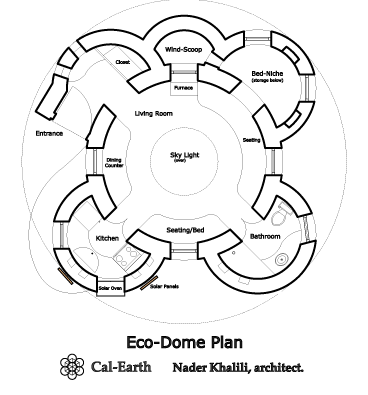
 3
3




 1
1








Now you can just draw three lines on your graph that all pass through the center of your structure at GROUND level, one at 78degrees, one at 55degrees, and one at 32degrees. Where they intersect the curved wall of the building will be were the sun will shine at noon. You just substitute your latitude for the one I used in the example to get YOUR values.




Michael Qulek wrote:Where I am stuck is on how to find the actual height, on the structure, of where the sun will land, and how to change that calculation should the diameter of the home change, or the amount of the home above/below grade change.





 1
1












 4
4




Daniel Burnam wrote:And yet there is a focal point on any given structure?
 1
1









|
And inside of my fortune cookie was this tiny ad:
Learn Permaculture through a little hard work
https://wheaton-labs.com/bootcamp
|




